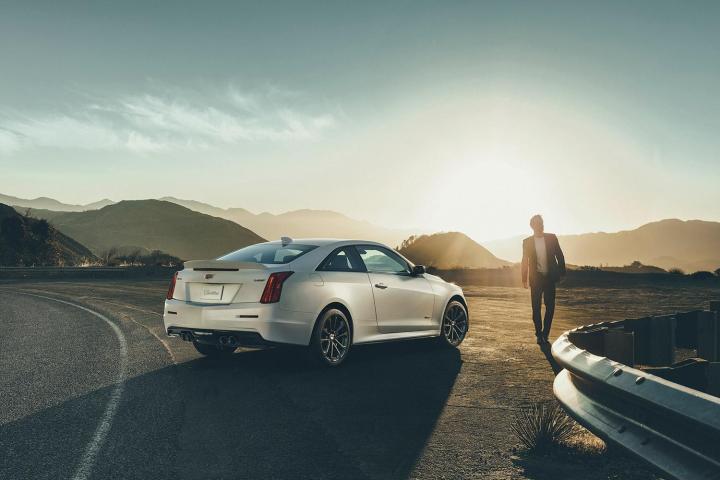
However, just because they must offer more efficient vehicles doesn’t mean they can decrease power output, too. Actually, it’s quite the opposite. Along with efficient engines, automakers are also offering ever-increasing amounts of horsepower. And it’s this power battle that has quickly turned into the biggest arms race since the cold war.
Electric drive, hydrogen, and plug-in hybrid tech all shine light at the end of the proverbial fuel economy tunnel … but it is a long tunnel. So what will hold the car world’s hand until then? One word: turbochargers.
Once the exclusive purview of incredibly slow diesels and import performance, turbochargers are now becoming common on everything from exotics to family cars. That is because these turbos allow engines to burn their fuel more efficiently, delivering both more power and, in some cases, improved efficiency.
Some automakers have recognized these advantages, and in 2015 a few of them are going to be worshipping at the altar of the turbo, making it the unofficial ‘year of the turbocharger.’
1. Acura
The big news from Honda’s luxury arm is the new NSX supercar. This long-awaited replacement for the first real Japanese supercar won’t be using a gauche 10- or 12-cylinder engine the size of a Kei car. Instead, it will be using a humble 3.6-liter V6 … with two big-ass turbos bolted to it.

This small displacement supercar may have as many as 600 Ferrari-humbling horsepower and could show the way forward, not just for Acura’s performance cars but also supercars in general. After all, why bother using a giant, heavy engine, when a lightweight six-cylinder can give the same performance?
2. Volvo
For 2015, Volvo is putting on its best Oprah impression: “You get a turbo! And you get a turbo!” This largess is courtesy of Volvo’s new Drive-E engine family. This collection of 2.0-liter four-cylinder engines uses a wide array of both turbochargers and superchargers to deliver V6 and V8 levels of power, while still holding up fuel economy.

If that wasn’t turbo-y enough for Volvo’s customers, the Swedish automaker is also planning on releasing a pintsize turbocharged three-cylinder. That small engine may not make it to the United States, but the electrically driven turbochargers Volvo is experimenting with just might — and that’s exciting. Volvo’s electrically turbocharged test vehicle delivers 450 hp from a tiny 2.0-liter engine, that makes Acura’s V6 look enormous.
3. Cadillac
Cadillac and V8s just together like fireworks and the fourth of July from the company’s massive 500 cubic-inch V8 in the 1970s to the Northstar V8s of the ‘90s, Americas luxury automaker has always had a flair for eight-cylinder engines. That is changing, however. Both the new ATS and CTS use a range of smaller four- and six-cylinder engines, and its latest V-Series performance cars are making the switch, too.

The recently-debuted ATS-V boasts an impressive twin-turbo V6 with 455 hp and 445 pound-feet of torque. But that may just be the start.
Cadillac has announced that the ATS-V’s big brother, the all-new CTS-V, will debut at the Detroit Auto Show in January. The new CTS-V could run a turbocharged V8. Or it may think smaller with an even more aggressively tuned and turbo’d V6.
Regardless, Cadillac is showing that it is willing to try and beat the Germans at their turbocharged own game.
4. Ford
Few automakers have embraced turbocharging more than ford. The blue oval will slap an EcoBoost logo on anything that stands still long enough. In 2015, though, it is really taking it to the next level.

The mainstay of the new F-150 lineup will be not one but two EcoBoost options: a 3.5-liter and a 2.7-liter. The 2.7-liter is particularly impressive, capable of delivering 375 pound-feet of torque and a towing capacity of 8,500 pounds.
Ford is also beginning to move towards turbocharged power in its performance vehicles. The new Mustang features an optional 300-hp EcoBoost four-cylinder, which may be the most fun option in the lineup. And that’s not all; there are rumors that the next-gen Ford GT will be powered by an EcoBoost powerplant, too.
5. Audi
No German automaker has embraced forced induction with the same passion as Audi. These days it is almost impossible to find a car wearing the four rings that doesn’t have at least one turbo. And those that don’t have turbos have superchargers.

The next big step will be whatever powerplant is featured on the next R8. Audi won’t be allowed to upstage the V10-powered Lamborghini Huracan on which the second-gen R8 will be based. So that means is that the new R8 is likely to get its power from – you guessed it — turbochargers. Expect to see a 600+ horsepower version Audi’s award-winning 4.0-liter TFSI V8 – like that under the hood of its Prologue concept.
Conclusion
In 2015, there will be plenty of talk about electric cars, hydrogen cars, and all manner of other new technology. The automotive world, however, will be defined by turbocharging. Everything from contractors’ trucks to playboys’ supercars will get their ‘go’ from turbocharged motors.
What this means for consumers is their family sedans might offer more power than supercars a decade ago while achieving better efficiency than early hybrids. So, sure, production hydrogen cars might be here, but 2015 will be turbocharged.


